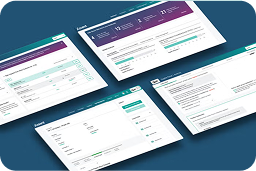Still Exploring?
Looks like you’ve been exploring our platform.
Want to see everything in one place?
View our solutions for getting standardized, validated, and usable product compliance data from your supply chain.
Supply chain transparency needed for compliance.
Identify PFAS in your supply chain and set yourself up for success.
Meet submission obligations with a deep view of your supply chain.
Deep-map your supply chain to streamline compliance.
Grow better with Assent’s TSCA compliance solution.
Uncover deep supply chain data to meet labeling requirements.
Verify the origin of your metals to avoid costly fines and delays.
See how we build your missing ESG foundation with our complete supply chain sustainability solution.
Deliver on your reporting needs with Assent ESG
Uncover hidden forced labor risks in your supply chain.
Deep transparency into mineral sourcing.
Easily see and manage the embedded emissions data of your goods.
Meet your German Supply Chain Due Diligence Act (SCDDA) requirements with confidence.
Confidently identify the entities and topics in your value chain that are most critical to compliance.
Learn about our trade compliance capabilities and how it uncovers hidden risks and opportunities.
Unlock supply chain transparency to mitigate trade risks.
Manage customs codes for your products.
Protect global market access & leverage trade agreements.
Verify the origin of your metals to avoid costly fines and delays.
Solutions for export classification code tracking.
Country of origin tracking supply chain solutions.
Discover how our automated supply chain sustainability management solutions help complex manufacturers see deeper, be smarter, and grow better.
Solutions for medical devices manufacturing.
Solutions for the electronics industry, across compliance and ESG.
Sustainability solutions for industrial equipment.
Supply chain sustainability for automotive.
Sustainability solutions for aerospace and defense.
View details about our complete supply chain sustainability platform, including product compliance, ESG, and trade compliance.
Evaluate and report on hidden risks in your supply chain.
Get a custom quote and find the right solution at the right price.
Learn about our data security protocols, to keep your information safe.
Reporting and data capabilities you need to meet your requirements.
View our integrations with SAP, PTC Windchill, and other standard APIs.
View details about our complete supply chain sustainability platform, including product compliance, ESG, and trade compliance.
Education, data collection, and technical support for suppliers.
Deep regulatory knowledge you need to build sustainable growth.
Managed services with dedicated support from world-class experts.
Assent regulatory experts have over 200 years of combined expertise. Learn more about how they helped make us the leader in supply chain sustainability.
View our content hub, including Interactive Tools, Webinars, Whitepapers, Guides and eBooks.
New Tools for understanding your requirements, risks, and our solutions.
Explore complex supply chain sustainability topics.
Get up-to-date information on constantly evolving topics.
Keep on top of existing or emerging regulations and trends.
Learn directly from experts on wide-ranging topics.
Discover why so many top companies have chosen Assent.
Access the Assent Knowledge Center, the leading regulatory resource for supply chain management, from our team of experts.
New Per- and polyfluoroalkyl substances (PFAS)
New Streamline your reporting process to comply with the EU CSRD.
Deep transparency into mineral sourcing.
Supply chain transparency needed for compliance.
Environmental, social, and governance (ESG) issues.
Deep-map your supply chain to streamline compliance.
The German Supply Chain Due Diligence Act (SCDDA) .
Grow better with our TSCA compliance solution.
Read Assent’s blog for regulatory updates, supply chain sustainability advice, best practices, and more.
Learn everything you need to know about supply chain sustainability.
Get clear educational resources on key product compliance regulations.
Discover how ESG and your supply chain are connected.
Learn best practices for managing your trade requirements.
Keep up with changing responsible minerals expectations.
Get an expert breakdown of the REACH Regulation.
Read about upcoming events and webinars hosted by our world-class team of regulatory experts.
Access comprehensive educational resources to better understand your business and regulatory requirements, and how to build your programs to mitigate supply chain risk effectively.
Learn how we became the leading supply chain sustainability management solution for the world’s most responsible complex manufacturers.
Read about our ESG journey and access our corporate sustainability reports.
See the leading manufacturers working with us to achieve supply chain sustainability.
Meet the team that helped Assent become the leader in supply chain sustainability.
Read the latest news about Assent from around the world.
View our industry and technology certifications.
Read more about the organizations and partners working with us to create supply chain sustainability.
Find out how to get in touch with us.
Become an Assentee! Learn about our culture, purpose, and opportunities.




Member states or ECHA identify substances as SVHCs. In the first step of this process, a dossier is prepared to explain why the substance meets the criteria established in Article 57 of REACH. A list of proposed substances is then published to the ECHA website. This publication gives interested parties — including companies importing, manufacturing, or using the substance in the EU — the opportunity to comment on the addition of the substance. Following this comment period, the substance is either automatically added to the Candidate List, or it is referred to the Member State Committee for further deliberation if comments have been made.


Once a substance has been added to the Candidate List, companies manufacturing, importing, or using the substance in the EU have immediate legal obligations to fulfill. Companies must notify ECHA if a substance listed on the Candidate List is present in their articles above the specified threshold, or in quantities totaling more than one metric ton per year. Notification must be made no later than six months after inclusion of the substance on the Candidate List. Suppliers of articles that contain an SVHC above the threshold have a legal obligation to provide information on safe use of the article to their customers under Article 33 of REACH. Companies should also be aware of other requirements they may be in scope of, such as Authorisation and Restriction requirements, to ensure they are conducting comprehensive due diligence.
Use the Assent Materials Declaration Tool to upload, edit, validate, and generate IPC-1752A and IPC-1754 XML declaration files.


Looks like you’ve been exploring our platform.
Want to see everything in one place?